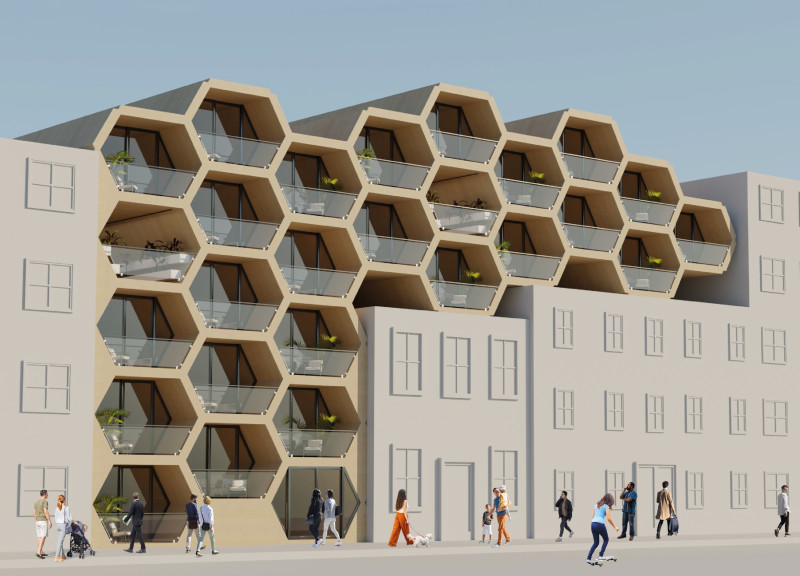5 key facts about this project
Hive Housing is a modular housing initiative designed to address the growing need for affordable, adaptable living solutions in urban areas. The project focuses on flexibility, allowing units to grow and adjust according to the specific needs of the community. Located in urban settings that require innovative housing, it emphasizes fostering connections among residents. The design includes three types of residential units made for students, young professionals, and families, each promoting a sense of community while serving distinct needs.
Design Concept
The main idea behind Hive Housing is its modular structure. This allows individual units to be built and expanded based on resident requirements. The design promotes a lifestyle centered around community, blending private living spaces with shared facilities like urban farms, gyms, and childcare areas. This combination encourages social interaction among residents and supports a communal living environment.
Spatial Efficiency
An important feature of Hive Housing is its hexagonal shape. This design choice helps to use space more efficiently than traditional rectangular buildings. The hexagonal layout reduces wasted vertical and horizontal space, allowing for more usable area at waist height. Custom furniture fits well within this plan, making use of spaces typically overlooked, like under tables and couches, maximizing the functional living area.
Materials
The project’s strength comes largely from its use of wooden beams. These beams connect the modular parts of the building and help manage loads effectively. By using wood wisely, the design not only ensures stability but also aligns with sustainable building practices, creating a solid foundation for the various housing units.
Hive Housing showcases a thoughtful approach to living arrangements, balancing personal privacy with shared community spaces. The design encourages adaptability, ensuring the structure can evolve effectively in response to the changing needs of its residents over time.



















































